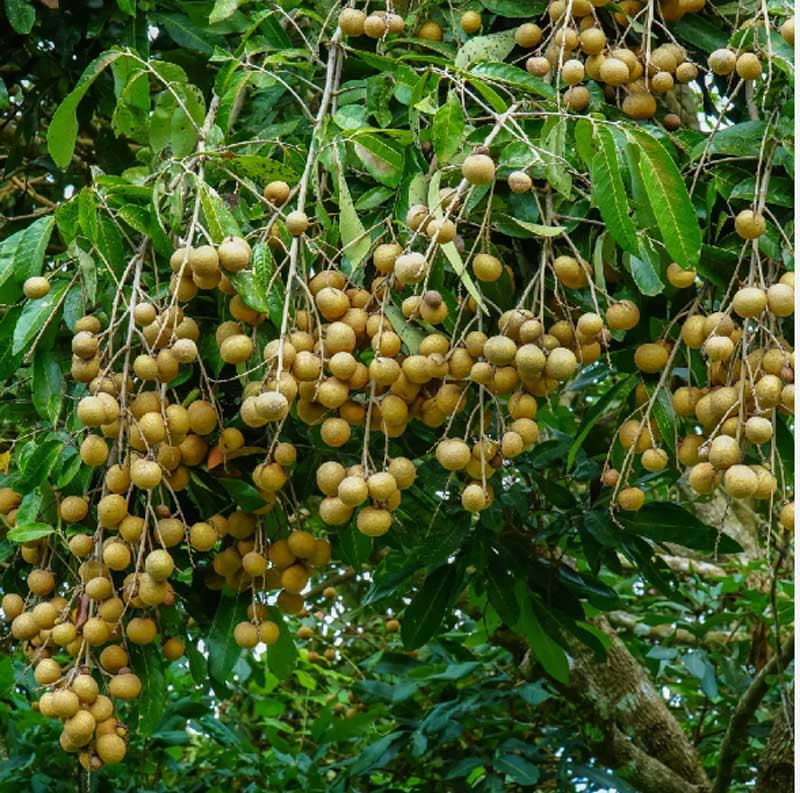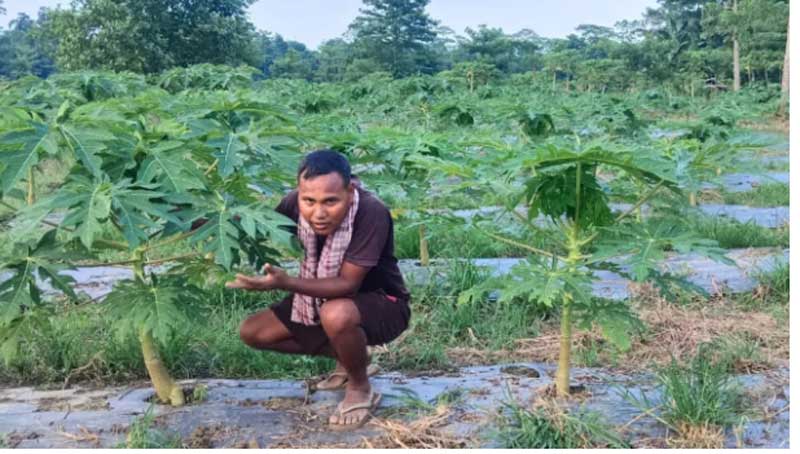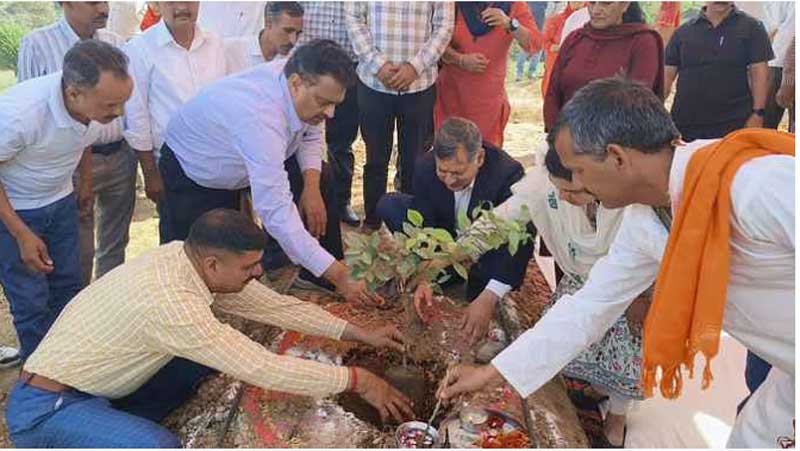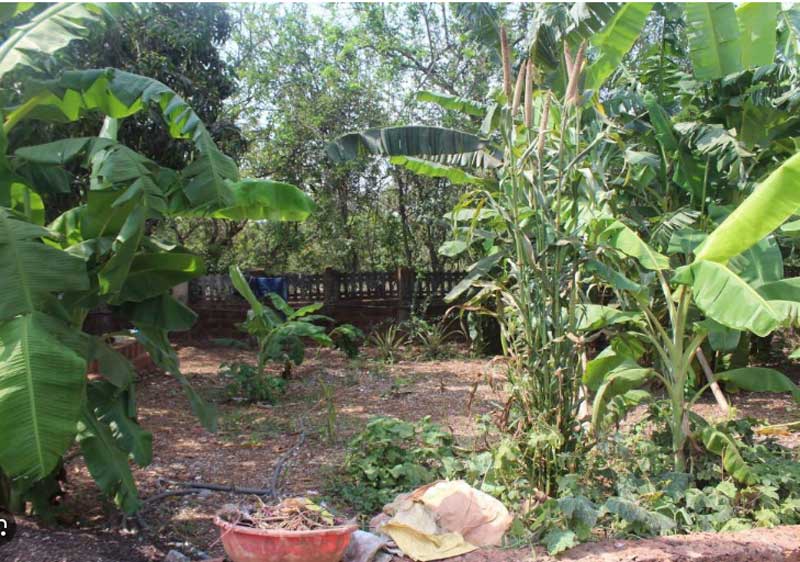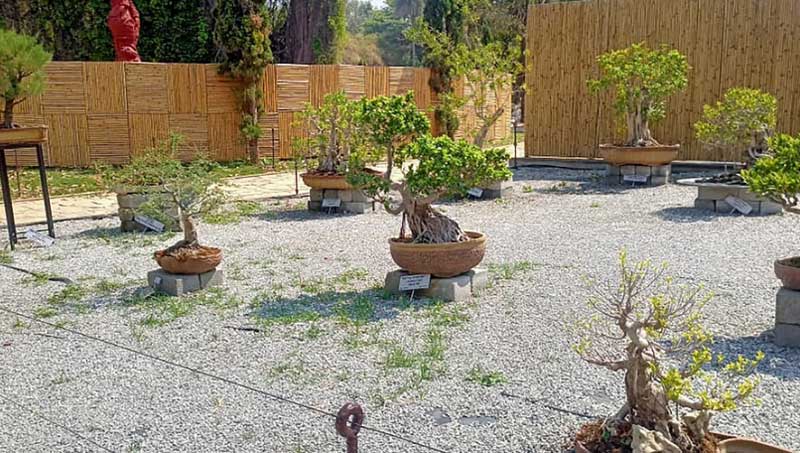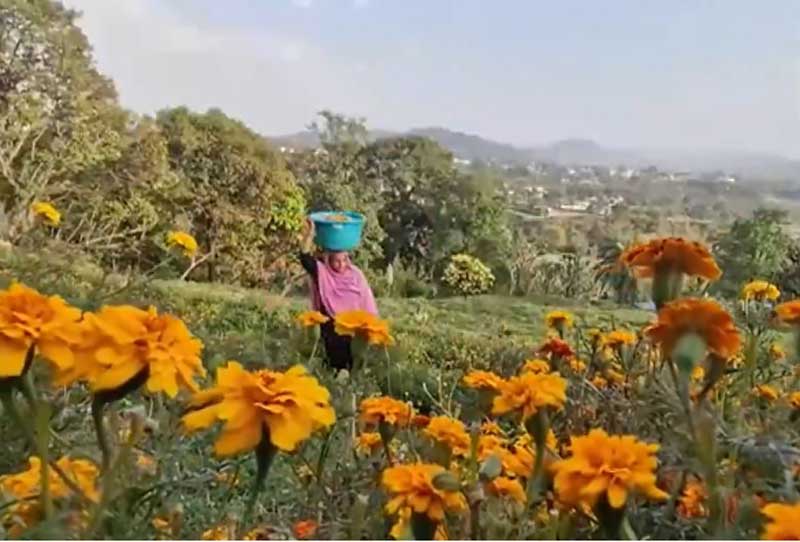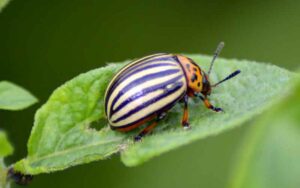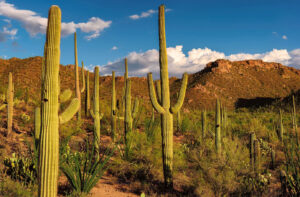Adenium allure: Secrets to cultivating desert rose
New Delhi: The Adenium plant, or Desert Rose, is a striking succulent native to Africa and the Arabian Peninsula. Known for its thick, swollen stem and vibrant, trumpet-shaped flowers, it thrives in well-drained sandy soils with minimal watering and full sunlight. Key care practices include balanced fertilization during the growing season, pruning for shape, and vigilance against root rot and pests. Propagation is typically done via seeds, cuttings, or grafting. The Desert Rose’s unique beauty and low maintenance make it a popular choice for gardeners, ensuring vibrant and healthy growth with proper care.
- Inrtoduction
The Desert Rose, scientifically known as Adenium obesum, is a unique and fascinating plant prized for its distinctive shape, vibrant flowers, and resilience. Although commonly referred to as the Desert Rose, it is not a true rose and lacks thorns. It belongs to the family Apocynaceae, the same family as milkweeds, and shares botanical ties with plants like the garden periwinkle, oleander, Madagascar palm, and frangipani (Plumeria). Adenium obesum is primarily found in sub-Saharan Africa and the Arabian Peninsula, thriving in semi-arid conditions.
A common misconception about the Desert Rose is that it cannot be grown in wet and warm climates. However, this plant is quite commonly cultivated in humid tropical areas such as Thailand, India, and the Philippines. In fact, growers in Thailand have developed hundreds of new varieties that are gradually being introduced to the United States. With some simple precautions, the Desert Rose can be grown into a spectacular, low-maintenance shrub for South Florida landscapes, contributing both its distinctive form and an abundance of exceptionally showy flowers.
1.1 Botanical Characteristics
Adenium obesum is distinguished by its thickened trunk, known as a caudex, which functions as a water storage organ, allowing the plant to endure arid conditions. The morphology of Adenium obesum varies significantly across different regions, exhibiting a range of forms from small, tuberous-rooted shrubs to baobab-like trees. This variability has led to ongoing scientific debate regarding its classification. Some experts consider all forms as one species with multiple subspecies, while others advocate for the recognition of distinct species and varieties.
1.2 Classification
The Desert Rose, formally known as Adenium obesum var. obesum, belongs to the genus Adenium within the Apocynaceae family. This genus includes succulent shrubs or trees native to semi-arid climates. The name Adenium is derived from the Arabic word “Oddaejn.”
1.3 Description
Adeniums are pachycaul succulent shrubs or trees, characterized by a swollen base (caudex) that can be partly underground. Above ground, the caudex ranges from globose to conical and narrows before branching. In their native habitats, they are slow-growing, long-lived, and variable in appearance. Mature cultivated specimens may lose the distinct caudex. Branches are smooth, grayish-green to brown, with small, glossy green leaves arranged spirally.
Adenium flowers are tubular with flared lips, varying from deep purplish-red to pink to white, often with color blends and fragrances. Flowers are produced in small terminal clusters throughout most of the year, especially in drier months. The fruit is a follicle that splits to release seeds with tufts of hair for dispersal, though seed production is unreliable due to pollination issues.
- Cultivars
Several cultivars of Adenium obesum, including ‘Singapore’ and ‘Grumbley’s White,’ offer variations in flower color and size. ‘Singapore’ is known for its large rose pink flowers, while ‘Grumbley’s White’ features white blooms. Other species within the genus, such as Adenium swazicum and Adenium somalense, are also available from specialist growers, although they are not as widely cultivated. An increasing number of hybrids, particularly those from Thailand, are becoming available and offer diverse options for enthusiasts. These hybrids can be sourced from various mail-order specialist nurseries.
- Adenium growing in containers
The Desert Rose (Adenium obesum) thrives in container cultivation, offering both ease of care and visual appeal. Ideal containers should have adequate drainage, with unglazed ceramic pots being preferred as they allow the soil to dry out between waterings. Clay pots should be wide enough to accommodate the expanding caudex to prevent cracking. A free-draining potting mix and regular applications of liquid fertilizer at half strength (20/20/20) are essential until maturity. Containers are particularly advantageous in regions with cool, wet winters, allowing for easy relocation to protect the plant from adverse weather.
3.1 Choosing the Right Container
Select a container slightly larger than the plant’s root system, with mature plants typically needing a pot with a 10-12 inch diameter. Avoid overly large pots to prevent excessive moisture retention. Terracotta, ceramic, or plastic pots with good drainage are ideal, with terracotta being especially beneficial due to its porosity. Always ensure the pot has drainage holes to prevent water accumulation.
- Soil Requirements
Adenium obesum requires well-draining soil, with a mix specifically designed for cacti and succulents being ideal. This typically includes components like sand, perlite, and organic matter. A good homemade mix might consist of one part potting soil, one part coarse sand or perlite, and one part peat moss or coconut coir. The ideal soil pH for Adenium obesum is slightly acidic to neutral, ranging from 6.0 to 7.0.
- Watering Frequency
Water thoroughly when the soil is completely dry. During the growing season (spring and summer), this typically means watering once a week. In the dormant season (fall and winter), reduce watering to once a month or less. Always allow excess water to drain out completely to prevent root rot. Water the soil directly rather than overhead to avoid wetting the caudex and leaves, which can lead to fungal issues.
- Light & Temperature
Light is crucial for Adenium obesum, thriving best in full sunlight. Position the container where it receives at least 6 hours of direct sunlight daily. Indoors, a south-facing window provides optimal light. If natural light is insufficient, supplemental grow lights can be utilized.
Temperature management is essential. Adenium obesum prefers warm temperatures, ideally between 70-90°F (21-32°C) during the growing season. Protect the plant from temperatures below 50°F (10°C). If grown outdoors, bring the plant indoors during cold weather to prevent damage.
- Potting & Repotting
Initial Planting
Fill the container with the prepared soil mix up to a level where the plant’s root system can sit comfortably. Position the plant so that the caudex is slightly above the soil line to prevent rot and enhance its aesthetic appeal. Fill in around the roots with the soil mix, firming it gently to support the plant.
Repotting should occur every 2-3 years or when the plant outgrows its container. The optimal time for repotting is during the plant’s dormant period, typically in late winter or early spring. Carefully remove the plant from its current pot, shake off old soil, and inspect the roots for any signs of rot or disease. Trim any damaged roots before placing the plant in a fresh pot with new soil.
- Fertilization
Type
Utilize a balanced, water-soluble fertilizer with an N-P-K ratio of 20-20-20 or a similar formulation. For enhanced flowering, consider a fertilizer with a higher phosphorus content to stimulate blooming.
8.1 Fertilization Frequency
Apply fertilizer every 4-6 weeks during the active growing season. Refrain from fertilizing during the plant’s dormant period.
- Propagation
From Seed: Sow seeds in a well-draining soil mix. Keep the soil moist but not waterlogged, and provide warmth and bright light. Seeds typically germinate within a week or two.
- Propagation Techniques:
10.1 Cuttings
Take cuttings from healthy branches and allow the cut end to dry and callous over for a few days before planting in a well-draining soil mix. Water sparingly until roots develop. Container growth is feasible with proper drainage, especially in areas prone to cold or wet winters. Unglazed ceramic pots are recommended as they allow soil to dry between waterings.
10.2 Seed Propagation
Seed propagation is unreliable due to pollination issues, but cuttings and grafting are common methods. Cuttings, treated with fungicide/rooting hormone, can be rooted in a Perlite/peat mix. Grafting, though complex, ensures genetic consistency.
10.3 Hand Pollination for Seed Production
Hand pollination using male/female compatible plants is necessary to ensure the production of viable seed.
Fresh viable seed, if available, should be promptly used for high germination rates.
Remove the pappus, dust the seeds in fungicide, and sow in a sterile, sandy, free-draining soil mix.
Germination occurs within a week at 85°F, and after a month, seedlings should have at least 6 true leaves and be ready for transplanting.
Seed-grown plants should be watered as needed and given regular applications of fertilizer.
10.4 Cleft Grafting
Rootstock and scion should be matched for size, with the rootstock pruned about 3 inches above the caudex.
Cut ¾ inch from either side of the severed end of the scion to form a wedge.
Make a vertical ¾ inch incision across the cut surface of the rootstock, into which the trimmed scion is inserted so that the cambial layers of cutting and rootstock are in contact.
Wrap the join with grafting tape.
10.5 Air Layering
Air layering has been used to propagate Desert Rose to a limited extent.
If successful, roots will form in 6-8 weeks, with higher success rates during hot, humid weather.
- Landscaping with Adenium (Desert Rose)
Successfully cultivating Desert Rose in the landscape focuses on light exposure and soil moisture control. Use movable containers in regions where temperatures drop below 35°F (1.7°C). The plant thrives in full sun, with shaded conditions leading to poor flowering and increased disease susceptibility.
For landscape planting, select a site with full sun, good air circulation, and well-draining soil. Construct raised beds in flood-prone or poorly drained areas using rocks and loose rubble topped with a sand and topsoil mix. Create a depression for planting at the appropriate depth. Avoid areas with automatic sprinkler systems to prevent overwatering.
Use free-draining soil mixtures and avoid organic mulches, opting for river gravel or lava rock for aesthetics. Young plants need regular fertilization: complete liquid fertilizer every two weeks in spring, followed by slow-release palm special fertilizer in early summer and early fall. Mature plants require reduced liquid fertilizer and continued slow-release fertilizer.
Desert Rose prefers copious rainfall and temperatures above 80°F (26.7°C) with well-drained soil. During cooler months, ensure the soil dries out between watering to prevent root rot. In South Florida, Desert Rose can be grown outdoors year-round, with watering only during extended hot, dry periods. Consistent full sun and attention to soil moisture are essential for thriving plants
- Pruning
Pruning plays a crucial role in shaping the plant, controlling its size, and eliminating dead or diseased branches. It is best performed in early spring before new growth initiates. Utilize clean, sharp tools to ensure precise cuts and minimize the risk of infection.
- Pest & Disease Management for Desert Rose
Pest Infestations:
Scale Insects:
Chemical Control: Apply systemic insecticides like Imidacloprid (Confidor) at a concentration of 0.2% solution. Alternatively, use Acephate (Orthene) at a concentration of 0.2% solution.
Mealybugs
Chemical Control: Use insecticidal soaps or horticultural oils such as neem oil at a concentration of 2% solution. Repeat applications every 7-10 days as needed.
Spider Mites
Chemical Control: Apply acaricides like abamectin or bifenthrin at recommended concentrations according to the product label. Follow label instructions carefully for application and safety.
Insect Pests in South India
Scale Insects, Mealybugs, and Spider Mites:
Same chemical control methods apply as mentioned above, with concentrations adjusted according to product instructions.
Disease Management
Bacterial and Fungal Root and Stem Rots:
Chemical Control: Use copper-based fungicides like Bordeaux mixture at a concentration of 1% solution. Apply as a soil drench or foliar spray following label instructions.
Fungal Leaf Spotting Diseases
Chemical Control: Apply fungicides containing chlorothalonil or mancozeb at recommended concentrations according to the product label. Use a concentration of 0.2-0.5% solution and follow label instructions for application frequency.
By applying the appropriate chemical controls at the recommended concentrations and following label instructions meticulously, you can effectively manage pest and disease issues while safeguarding the health of your Desert Rose plants.
- Conclusion
Adenium obesum, or the Desert Rose, is highly adaptable and can thrive both indoors and outdoors with proper care. Its thick trunk and vibrant flowers make it a striking addition to any collection. Cultivating it in containers with well-draining soil, ample sunlight, and regulated watering ensures year-round growth and continuous blooms. This resilient plant is ideal for both novice and experienced gardeners due to its aesthetic appeal and ease of maintenance.
Acknowledgment:
The authors gratefully acknowledge the support from the Institute of Horticulture Technology, Greater Noida-201310, in conducting this research.
Caution!
All adeniums have highly toxic sap. In Africa, the sap has been used to make poison arrows for hunting game. On the island of Socotra where introduced goats have decimated much of the native vegetation, the adeniums are left untouched. Use care when handling and pruning plants. Do not get sap in your eyes. If you get sap on your skin, wash it promptly. Commercial propagators handle hundreds of plants daily without problems; however, precautions are prudent. If you have pets prone to chewing on your plants, they will likely ignore these after the first experimental taste, but to be safe, keep the pets and adeniums separated.
Dr. Amar Singh
Dr. V.K. Kaul
Dr. V.K. Patel
Institute of Horticulture Technology

